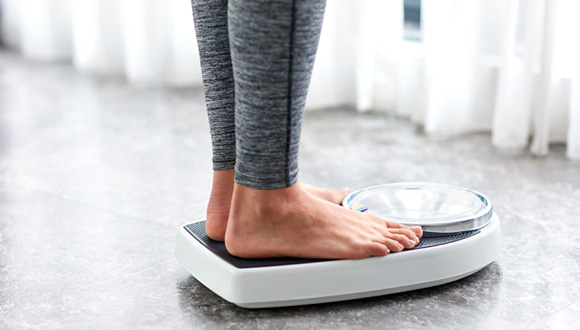Everywhere you look, there are advertisements for the latest “fad” diet. But does following a trendy diet actually help you lose weight? Nathalie Sessions, a wellness dietitian at Houston Methodist, says trendy diets don’t have lasting results and, in fact, may lead to a variety of health problems. “If diets worked, obesity would not be the epidemic it is today,” Sessions said.
According to the Centers for Disease Control and Prevention, obesity affected about 93.3 million American adults in 2015-2016.
Losing weight doesn’t have to mean daily trips to the gym and a strict calorie allotment. Instead, Sessions recommends making lifestyle changes and establishing healthy behaviors for life. Creating a sustainable plan is the key to success.
Small changes add up
To get you started on your weight-loss journey, here are five small steps to help:
1. Eat slowly. Eat your meals slowly and without distraction, such as watching TV. Your body will be better able to pick up on signals from your brain that you are full, which will help you eat less.
2. Watch portion size. Trick yourself into easy portion control by using smaller plates, bowls and silverware, which can make it appear as though you’re eating more than you are. If you work, prep your meals ahead of time. Most of the food available at a workplace is high-calorie and high-fat, and you can avoid these unhealthy options if you bring a healthy meal. It will likely taste better, too.
3. Drink plenty of water. Being hydrated is key to losing weight and not feeling hungry. Sugar-sweetened drinks such as sodas, coffee drinks, sweet tea, lemonade and energy drinks add empty calories to your eating plan. With liquid calories, you don’t feel full, but you’ve consumed a large number of calories.
4. Emphasize protein and fiber. Reaching for protein- or fiber-filled foods, like chicken or apples, can help you feel satisfied longer. And try to incorporate more plant-based proteins in your diet, such as beans, chickpeas and lentils. They have fiber and protein and little to no fat.
5. Add movement to your day. Physical activity burns calories and boosts your mood. If you’ve never exercised before, start slowly. Make a goal of going for a brisk walk every day, and work up to 30 minutes of moderate exercise three or more days a week. You can also try using a free app on your phone to count your steps. It can help motivate you and help you set progressively higher targets.
It’s important to remember that everyone’s body and nutritional needs are unique. Working with a trainer or dietitian can be helpful when you're starting your weight-loss regimen or when you hit a plateau. Dietitians can assess your nutrition status and explore other factors that could be standing in the way of a weight-loss goal, such as:
- Hormonal imbalances
- Stress management
- Sleep quality
“Working with credentialed health care professionals, such as personal trainers and registered dietitians, provides a personalized approach, encouragement and support for your wellness goals,” Sessions said. Support from your friends and family members is also a good source of strength and accountability.


